Compatibility of vegetable crops. Vegetable compatibility. Compatibility of vegetable crops in one bed
A wide variety of vegetable crops are grown on the dacha plot. They belong to different families, and their planting dates do not coincide. In small gardens, compacted cultivation is used. How to ensure compatibility in limited space vegetable crops in the same garden?
Good predecessors
Every year, before the start of the gardening season, you should carefully consider the placement of plants in the garden. It is best to create a planting plan that will be useful for the coming season. Different ones can oppress each other or contribute to the spread of dangerous diseases. However, compatible plants, on the contrary, will promote better development and protect against pests. To avoid mistakes, you must follow certain rules.
The area for compacted planting provides additional nutrition for the increased volume of plants. To do this, the soil must be sufficiently fertile and clean. At the beginning of the season, crop rotation is planned. Plants that were grown last year should not have the same pathogens and pests. At the same time, they must have a beneficial effect on each other, so the compatibility of plants in the garden is important. Table best predecessors- this is the instruction with which planning begins.
An analysis of last year's plantings is carried out. Right choice will help you avoid many unpleasant moments when growing vegetables.
Predecessor table
When cultivating any crops, crop rotation should be observed. The information presented in the table will help you plan the site correctly.
Vegetable crop | The best predecessors |
Solanaceae | Legumes, cabbage, cucumbers |
Solanaceae |
|
Onion garlic | Peas, cabbage, radishes |
Sweet corn | Potatoes, cabbage, legumes |
Sweet pepper | Cucumbers, beets, carrots, rutabaga, cabbage |
Table beet | Cabbage, potatoes, cucumbers |
Umbrella | Peas, cabbage, cucumbers, tomatoes |
Repeatedly growing a plant in one place is also undesirable.
Layout
When cultivating vegetable crops, information is needed about their mutual influence. To avoid an unfavorable neighborhood, you need to know exactly the characteristics of vegetable crops. Acceptable growing conditions for plants that will be combined must be similar. This will help to accurately plan the entire area for the garden and achieve successful cultivation of various plants in compacted beds. In addition, individual cultures not only have beneficial effect, but also repel pests. The compatibility of plants in the garden is quite important.  A detailed list of representatives of different families that coexist well in the garden helps to accurately determine their placement. Equally important is information about plants with which joint cultivation is undesirable. They will suppress vegetable crops growing nearby.
A detailed list of representatives of different families that coexist well in the garden helps to accurately determine their placement. Equally important is information about plants with which joint cultivation is undesirable. They will suppress vegetable crops growing nearby.
Plant compatibility table
For the normal development of vegetables and obtaining a high-quality harvest, they need to create favorable conditions. Proper agricultural technology combined with a successful combination of plants will help solve many problems. The data given in the table will be useful when placing plants on the site. 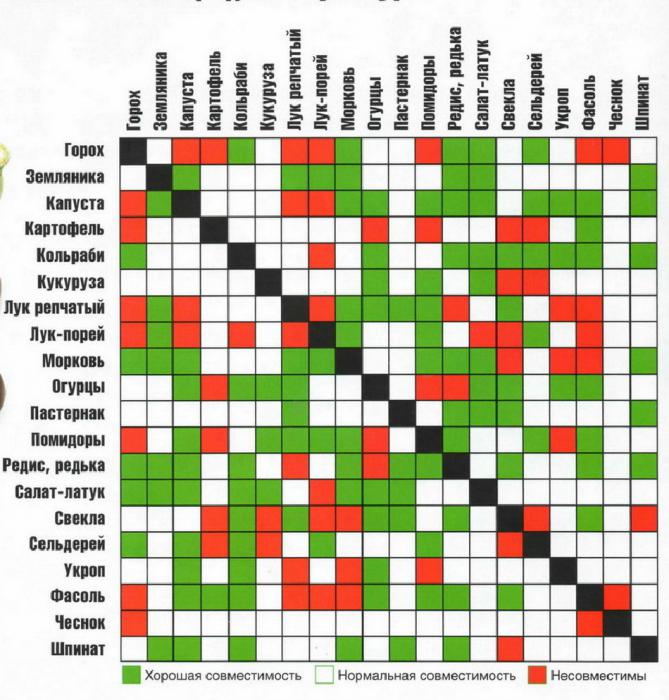
Successful combinations
When planning sowings, you should take into account the time of development of the usable area, the height and compatibility of plants in the garden. Carrots and onions go well together. They are placed in rows. Alternate three rows of carrots with four rows of onions. These plants have a beneficial effect on each other and at the same time protect against pests. A trio of plants will be successful. It's late White cabbage, head lettuce and spinach, which are used to compact garden beds. You can name other examples of combinations of vegetables that have good compatibility between plants in the garden. The table will help everyone find best couple. For example, early cabbage and celery, which have different planting dates. At the beginning of spring, seedlings of the first vegetable crop are planted. The distance when planting early cabbage is maintained at least fifty centimeters. Three weeks later, celery is added. Plants go very well with different terms maturation. in the garden in this case is based on the fact that early ripening crops are placed along the edge of the beds of plants whose ripening period is longer. For example, a combination of planting tomatoes with several rows of dill for greens and onions for feathers, as well as spinach, will not interfere with the longer development of tomato bushes. The classic combination is corn and string beans. In this example, one plant serves as a trellis for another.
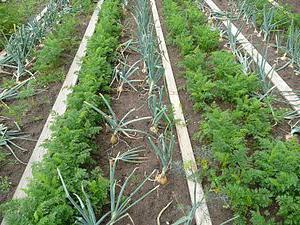
Lighthouse cultures
Many plants have a long period of seed germination. To designate rows of such a vegetable crop earlier, quickly germinating and early-ripening plants are used. They allow for more early dates begin soil cultivation and agrotechnical activities. An example is the joint sowing of radishes and carrots. By the time it takes for the root crop to ripen, the early and early-ripening vegetable has time to ripen and free up space. In addition to radishes, lettuce, spinach and dill are used. They are sown along the edge of a bed of cucumbers, tomatoes and peppers.

Amulets of vegetable plantings
Aromatic herbs are not forgotten either. These plants are fragrant, creating an amazing atmosphere around. Vegetables located nearby become more stable under the influence of volatile substances. They are able to repel pests. Medicinal plants, such as valerian and yarrow, planted along the edge of the beds, will be an excellent preventive measure that increases resistance to diseases. Lettuce and spinach are plants that can enhance the activity of neighbors. They will be good companions and have excellent plant compatibility in the garden. Table successful combinations vegetable crops confirms this statement. Lettuce and spinach are often recommended for joint cultivation with other vegetable crops.
![]()
Unfavorable neighborhood
Most plants get along well in the limited space of beds. When placing them, the compatibility of plants in the garden is taken into account. A table of successful combinations of vegetable crops will help to distribute them correctly. However, we should not forget about plants that will have a depressing effect on others. These include fennel and wormwood. 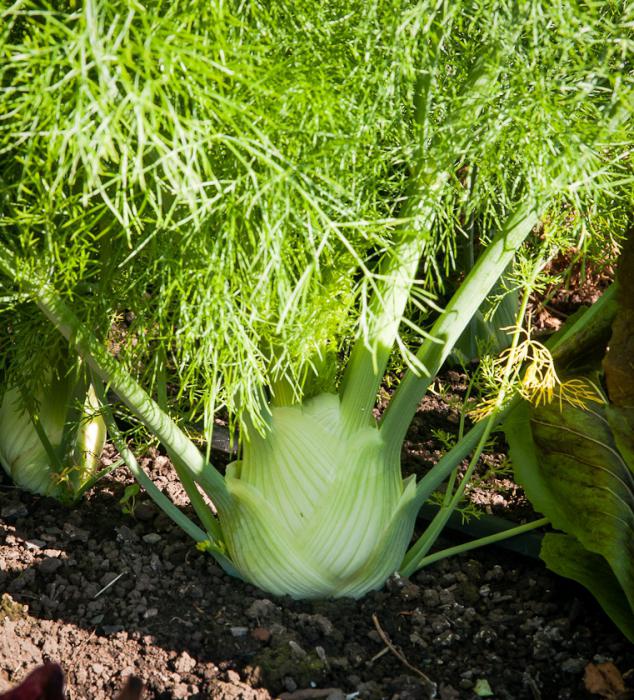 For these vegetable crops, it is necessary to allocate a separate corner of the garden, which will provide privacy.
For these vegetable crops, it is necessary to allocate a separate corner of the garden, which will provide privacy.
Mixed planting of vegetables in the garden is practiced in almost every personal plot. Summer residents prefer to plant little by little different cultures rather than planting the entire area with one type of berries or other plants.
When growing vegetables in protected soil, it is necessary to follow certain rules, taking into account the compatibility of crops and the timing of their planting. A summary table of planting vegetables and a table of vegetable compatibility is presented on this page.
“Landing” is a complex concept. To plant correctly means to choose wisely planting material, properly prepare seeds and seedlings for planting, observe proper fruit rotation and compatibility of crops with each other. To ensure the compatibility of vegetables, when planting, the required intervals recommended by seed manufacturers should be observed.
Table “Compatibility of vegetables when planting in mixed crops”
To find out about the compatibility of vegetables in the garden and observe the right juices sowing, study the table “Compatibility of vegetables when planting in mixed crops.”
|
Culture |
The best predecessors |
Compatible crops for mixed crops |
| Radish | Cucumbers, tomatoes | Cucumbers, carrots, parsley, all types of cabbage |
| Cabbage | Cucumbers, tomatoes, onions | Beets, legumes, radishes, salad |
| Beetroot, chard | Cucumbers, cabbage | Legumes, all types of cabbage, onions, leeks, garlic, green crops |
| Legumes | Tomatoes, cabbage, pumpkin | Corn, cucumber, green crops, cabbage, carrots, beets, tomatoes, eggplant, pumpkin |
| Onion on turnip | Cucumbers, zucchini, all green crops | Beets, tomatoes, turnips, radishes, radishes, cabbage, strawberries and wild strawberries, carrots |
| Carrots, celery | Beets, onions, garlic | Leeks, onions, tomatoes, legumes, radishes, all green crops |
| cucumbers | Tomatoes, peppers, onions, cabbage | Cabbage, tomatoes, turnips, radishes, legumes, green crops |
| Zucchini | Cabbage, all root vegetables | Legumes, corn, green crops |
| Parsley | Cabbage, cucumbers | - |
| Leeks, garlic | Cabbage, pumpkin, zucchini, all green crops | Tomatoes, beets, turnips, radishes, cabbage, strawberries and wild strawberries |
| Pumpkin | Potatoes, cabbage, all root vegetables | Legumes, green crops |
| Sweet peppers, tomatoes | Cucumbers, onions, zucchini | Garlic, leek, cucumber, radish, carrots, basil, asparagus |
| Eggplant | cucumbers | Garlic, leeks, legumes, celery, green crops |
| Potato | Beets, carrots, cabbage | Legumes, green crops, onions |
| Melon | Legumes, potatoes, carrots, cabbage | Green crops, corn |
| Strawberries and wild strawberries | Onion garlic | |
| Salad | Cucumber, tomato, potato | Tomatoes, dill, cucumbers, parsley |
| Spinach | Cucumber, zucchini, peas | Lettuce, cucumbers, dill, beans, peas |
| Basil | Cucumbers, legumes | Parsley root and leaf |
| Coriander | Cabbage, cucumber, tomato | Onions, chard, beets |
Growing vegetables and other crops in protected soil
Of course, this is not necessary over the entire area of the garden, but for many crops protected soil is a 100% guarantee of a harvest. The peculiarities of our climate also have an impact: in addition to the fact that our summers are short and not always sunny, the climate has recently been unstable - heat is possible in March and frosts in June.
When growing vegetables and other crops in protected soil on a site, it is advisable to have arcs for organizing temporary film tunnels and at least one greenhouse - simple, without artificial heating. If you have a greenhouse, you can grow good seedlings, get ultra-early greens and radishes for the table, an excellent harvest of tomatoes, cucumbers, peppers, eggplants, watermelons and melons. Zucchini and basil work well in the greenhouse. Of course, no one is going to plant carrots in a greenhouse, but something thermophilic or exotic is welcome. The greenhouse also increases the period of possible harvesting - for example, the last melons, in the absence of frost, can be harvested in October!
You can build a greenhouse yourself. It usually has a welded steel frame, which is then covered with a transparent material - film, glass or polycarbonate. Does a greenhouse need a foundation? This is a large structure, so minimal foundation is required. The easiest way is to make a columnar one. It is necessary to take into account that, other things being equal, the best greenhouse is the one that is higher.
You can also make mini-greenhouses and nurseries that look like small “houses”. They are not only functional, but also decorate the garden. As for large greenhouses, you can purchase ready-made options. The greenhouse must be of high quality, which means the materials for its construction must be of high quality. Are you sure you don't a large number of Can you buy really high-quality materials cheaper?
Design and materials for a greenhouse with protected soil
What to choose for a greenhouse - film, glass or polycarbonate? Each material for a greenhouse with protected soil has its own characteristics.
The film provides an excellent microclimate, and it is removed for the winter, which has a positive effect on the quality of the soil. But sometimes it gets too steamy and is fragile. New season- new film. Plus the time and work of stretching it. Glass is a durable material, transparent, in such a greenhouse it is achieved heat, which, in particular, is especially suitable for melons and melons. Disadvantages: it does not transmit ultraviolet radiation, which is important for plants, it is too dry in such a greenhouse, you have to humidify the air. When it freezes, glass does not retain heat; glass can be broken due to carelessness. And yet - there is no way to disassemble the greenhouse. The soil inside, once without snow cover, quickly loses fertility and has to be replaced after some time.
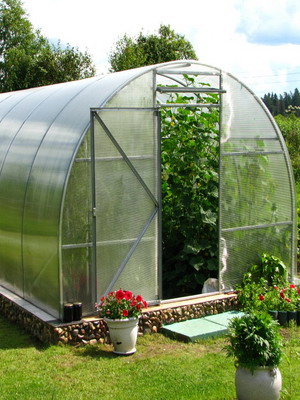
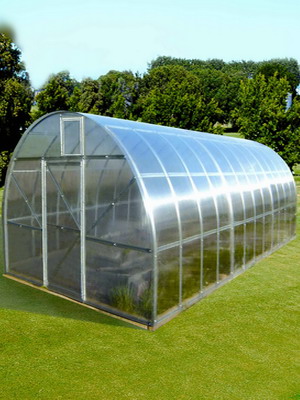
When constructing greenhouses with protected soil, polycarbonate has recently been increasingly used. This is a new modern material - it is the warmest, but does not steam and retains moisture. It allows you to create greenhouses of any shape, it is durable and does not break. The microclimate in such a greenhouse is the most ideal. Polycarbonate protects against frost and allows ultraviolet light to pass through. Perhaps this material is the best. The only negative is the gradual loss of fertility, as in a glass greenhouse.
Fertilizers for growing vegetables in protected soil
Regular application of fertilizers when growing vegetables in protected soil is a significant contribution to your success. The best option for a gardener is to combine mineral and organic fertilizers. There should be slightly more organic matter, since, in addition to enriching the soil with nutrients, it also improves the structure of the soil. Organic fertilizers are manure, humus, compost and green manure. Fertilization with green manure is the laying of certain plants directly into the beds of green mass: calendula, sedum, nettle, marigold, nasturtium, onion and garlic peels. After harvesting, it is good to sow the beds with peas or mustard, and then dig up along with all the sprouted green mass.
Some picky plants can develop safely surrounded by any green “brethren”. But not all cultures are so indiscriminate in their choice of neighbors. Let's find out what is best to plant with so that the plants do not oppress each other.
Classic example mixed planting has been known for a long time: the American Indians planted corn, beans and pumpkin together. The last one with her large leaves created shade, preventing the scorching sun from destroying the plants, and inhibited the growth of weeds. Thanks to its tall stem and narrow but quite numerous leaves, corn protected the pumpkin from overheating, and beans, being good green manure, enriched the soil with nitrogen. And this is not the only example of such an ideal garden community.
Eggplant
This crop is best planted among bush beans, which repel the Colorado potato beetle and thereby protect blue vegetables. Eggplants also grow well next to thyme and peas.
But the proximity to cucumbers, tomatoes and potatoes is not the best option. Such “relationships” reduce the quality and quantity of the harvest.
Beans
Beans grow well in the vicinity of many crops: cucumbers, tomatoes, sweet corn, radish, radish, spinach, mustard. They are also compatible with potatoes, but in this case you need to know one thing: beans should be planted only along the edge of the potato field, as they absorb a large amount of nutrients. Otherwise, the potato tubers will not receive enough necessary elements (in particular, potassium) and will grow small.
There are also useful herbs for beans that improve plant development. These are basil, borage, lavender, oregano, rosemary, yarrow. However, beans should not be planted with any types of onions, garlic, peas, marigolds and wormwood.
Grape
The growth of grapes is stimulated by crops such as radishes and oilseed radishes. It also gets along well with carrots, beans, rye, potatoes and beets. And when planted together with onions, barley, soybeans and especially cabbage, the grapes quickly wither.
Peas
Peas grow well and bear fruit in the vicinity of carrots, turnips, cucumbers, radishes, radishes, kohlrabi, and parsley. And its undesirable neighbors are all types of onions, garlic, tomatoes, wormwood and bush beans.
Cabbage (white cabbage and broccoli)
Crops such as cabbage, bush beans and celery have a beneficial effect on each other. For example, the latter protects cabbage from flea beetles.
![]()
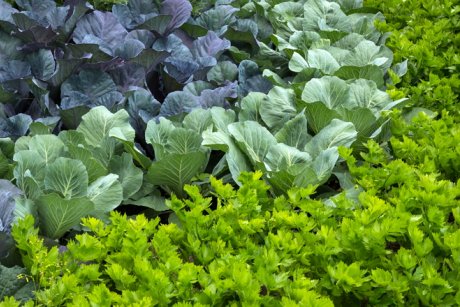
Also, white cabbage and broccoli get along well with peas, cucumbers, carrots, spinach, tomato, and chicory. Positive influence Dill has a beneficial effect: planted between rows, it improves the taste of cabbage and repels aphids and caterpillars. And aromatic herbs save this crop from cabbage butterflies: thyme, sage, rosemary, mint, chamomile.
Potato
The best neighbors for this crop are spinach, beans, and bush beans. In particular, the latter enriches the soil with nitrogen and repels the Colorado potato beetle.
If this striped pest does not allow the potatoes to develop well in your area, plant catnip, coriander, nasturtium, tansy or marigolds nearby.
Potatoes are not a picky crop when choosing neighbors. Therefore, it is easier to list which plants it is not recommended to plant with. These are melons, cucumbers, asparagus, sunflowers and celery.
Strawberry
Garden strawberries (strawberries) are recommended to be planted next to bush beans, spinach and parsley. It can also coexist with garlic, onions, radishes, radishes, beets, dill, leaf lettuce. But you shouldn't place strawberries next to horseradish.
Onion
Onions go perfectly with carrots. These crops protect each other from pests: carrots repel the onion fly, and onions repel the carrot fly. Due to its compact shape, onions thrive in the inter-rows of main crops such as beets, cucumbers, strawberries, spinach, and radishes. And proximity to beans, asparagus, watercress, peas and beans is contraindicated for it.
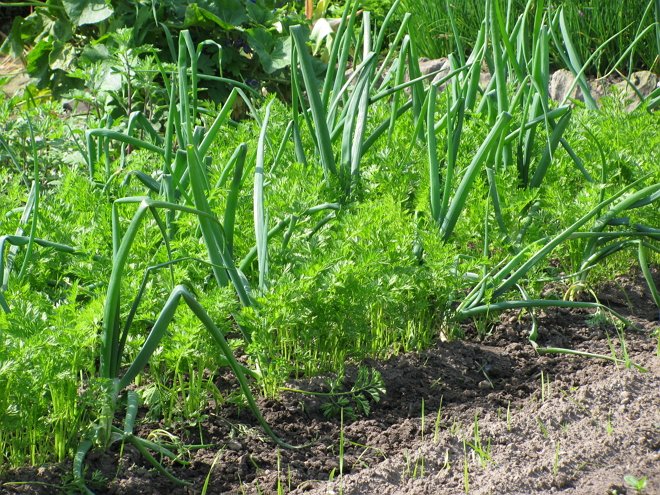
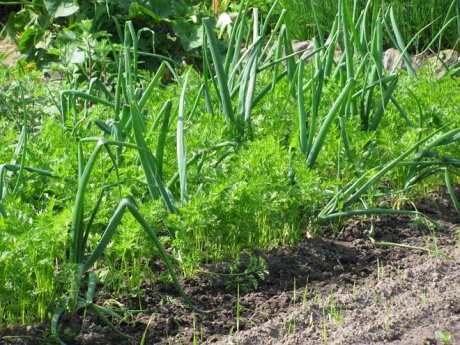
Some herbs have a positive effect on onions: thyme, chamomile (no more than one plant per meter of bed), sage.
Carrot
This crop tolerates the proximity of many plants well, but develops best next to onions, peas and spinach. And herbs such as dill, anise, celery and parsley cannot be planted nearby. They act in a depressing way.
cucumbers
Cucumbers go well with bush and climbing beans, celery, beets, lettuce, cabbage, garlic, onions, spinach, fennel, dill, basil, and marjoram. But it is best to plant beans around a bed of cucumbers: they help the plants develop faster.
Pepper
Pepper feels great next to eggplant, kohlrabi, tomatoes, basil and thyme. And hostile plants are fennel, beans and beets.
Radish and radish
These crops grow well in combination with tomatoes, spinach, parsley, any type of onion, garlic, cabbage, strawberries, and peas. But the ideal neighbors for them are leafy and head salads(they protect against flea beans) and bush beans (improves the taste of root vegetables and repels pests).
Turnip
For turnips to grow tasty and sweet, they need to be planted next to peas, watercress, marjoram, radishes, celery or spinach. But mustard, tomatoes and cabbage should not be nearby.
Beet
Beets go well with potatoes, tomatoes, bush beans and spinach. All these cultures stimulate each other's growth. Beets also have a positive effect on cabbage of all types, lettuce, radishes and radishes.
This culture also gets along well with onions, garlic, cucumbers, strawberries, and celery. But it grows poorly in the vicinity of corn, potatoes, chives, and parsley.
Celery
Celery and white cabbage are a wonderful duo. Celery drives away pests (whites) from cabbage, and it, in turn, stimulates its growth.
Celery also goes well with tomatoes, spinach, cucumbers, beets, lettuce and especially chives and bush beans. And next to corn, potatoes, parsley and carrots, it develops very poorly.
Tomatoes
Tomatoes grow successfully next to celery, radishes, radishes, corn, lettuce, cabbage, garlic, carrots, beets, chives, spinach, bush beans, and parsley. But keep in mind that this crop does not have a very good relationship with kohlrabi, fennel and dill.
It is also advisable to grow herbs next to tomatoes: basil, lemon balm, borage, mint, sage, thyme. And also an excellent neighbor - stinging nettle. It improves quality tomato juice and extends the shelf life of fruits.
Pumpkin
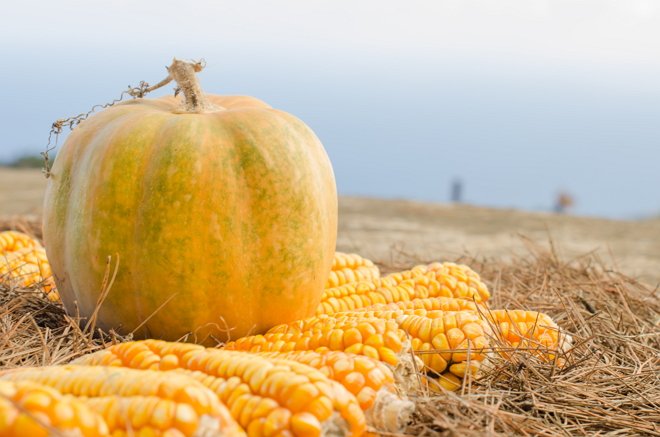
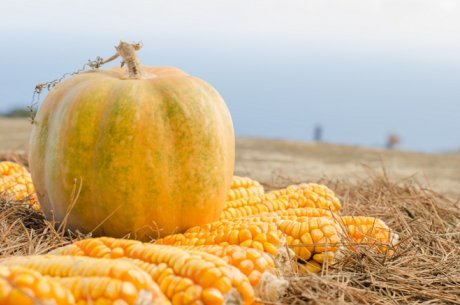
But such neighbors as tomatoes, cucumbers, eggplant, potatoes, peppers and especially zucchini should be avoided. The latter are cross-pollinated with pumpkin, and as a result, a hybrid of these crops with low taste grows.
Bush beans
This is a very friendly plant. It grows well next to radishes, all types of cabbage, corn, celery, cucumbers, potatoes, tomatoes, beets, lettuce, strawberries and spinach. Plus, beans release nitrogen into the soil and thereby help these crops develop well.
But the proximity of onions, garlic, fennel and peas is undesirable for beans. It is better to plant it next to thyme: it will protect against black aphids.
Garlic
Good neighbors for garlic are tomatoes, beets, carrots, cucumbers, and strawberries. But beans, peas and cabbage have a negative effect on it.
To make it easier for you to remember this information, we have prepared a visual diagram that you can save and keep handy while drawing up your garden plan.


We hope this will help you correctly plan the location of the beds on your site. Have a rich harvest!
Plant compatibility
Which plants can grow together with others, and which ones are contraindicated to be planted next to each other? What is better to plant in last year's beds? What garden vegetables are compatible with each other?
The general requirements for companion plants are as follows:
- they must be from different families, otherwise they will “crowd” at a common feeder, spread common diseases and attract common pests;
- they must have significantly different vegetative characteristics so that resource needs arise at different times, so that they do not shade each other and allow for more efficient use of the land;
- it is desirable that the plants suppress and not spread diseases of the companion; the plants should repel harmful insects and attract insects that are beneficial to the companion;
- plants must be compatible with each other.
Good and bad companions of vegetables:
| Culture | Good companions | Bad companions |
| cucumbers | Radishes, peas, celery, lettuce, cabbage, tomatoes, sunflower, corn, marigolds | Sage, dill, mint, fennel |
| Tomatoes | Garlic, basil, carrots, onions, parsley, peas, sage, cabbage, marigolds, spinach, lettuce | Potatoes, fennel |
| Pepper | Basil, carrots, lovage, oregano, marjoram, onion, marigold, coriander, catnip, nasturtium | Fennel, kohlrabi, beans |
| Watermelon and melons | Corn, peas, radishes, beets, sunflowers | cucumbers |
| Eggplant | Peas, beans, lettuce, basil, tarragon, thyme | |
| Brussels cabbage |
Celery beans, dill, hyssop, mint, nasturtiums, potatoes, sage, chamomile | Lettuce, strawberry, tomatoes |
| Peas | Carrots, corn, cucumbers, eggplants, lettuce, radishes, spinach, tomatoes, potatoes | Onion garlic |
| Zucchini | Beans, corn, mint, nasturtiums, radishes | Potato |
| Cabbage | Beans, beets, celery, chamomile, dill, hyssop, mint, nasturtium, onion, oregano, potatoes, sage. | Strawberry, tomatoes |
| Potato | Beans, cabbage, corn, lettuce, onions, marigolds, radishes, coriander, nasturtium, flax | Tomatoes cucumbers, sunflower, pumpkin |
| Kohlrabi | Beets, onions, cucumbers, dill, mint, sage | Beans, tomatoes |
| Corn | Peas, melon, pumpkin, beans, soybeans, sunflower, lupine | |
| Onion | Cabbage, potatoes, strawberries. Carrots, lettuce, beets, tomatoes | Peas, beans, sage |
| Leek | Carrots, celery | Beans, peas |
| Carrot | Onions, leeks, garlic, tomatoes, beans, radishes, peas, scorzonera, sage | Dill, anise |
| Radish | Cucumbers, beans, peas, cabbage, cauliflower, lettuce, pumpkin, tomatoes, carrots, parsnips, onions | Hyssop |
| Salad | Strawberries, radishes, beets, cabbage, peas, carrots, cucumbers, beans, tomatoes, clover | |
| Beet | Cabbage, kohlrabi, onion, mint, catnip | Climbing beans |
| Celery | Onions, leeks, tomatoes, beans, cabbage | |
| Pumpkin | Corn, beans, sunflower, peas, tomatoes, radishes, nasturtium, mint | Potato |
| Beans | Corn, cabbage, cauliflower, beets, pumpkin, carrots, tomatoes, strawberries, savory, nasturtium, borage, marigolds | Fennel, garlic, leek |
| Cauliflower | Potatoes, radishes, onions, beets, beans, celery, dill, chamomile, mint, hyssop, nasturtium, oregano | Tomatoes, strawberry |
| Garlic | Tomatoes, carrots, eggplants, cabbage | Peas, beans |
| Spinach | Eggplants, peas, onions, cabbage, celery, peppers |
To facilitate the sharing of such a resource as light, you can combine plants of different heights, and as a short companion you need to choose a plant that benefits from some shading. Let’s say, in a pair of carrots + tomatoes, tall tomatoes will, of course, cover the carrots, and in the heat that’s all they need. Satisfied with cucumbers, pumpkins, beans, planted over corn or sunflowers, and the sparse shadow cast by tall neighbors. Cabbage not only helps the salad grow better in its shade, but also makes it more tender and crunchy.
It's easy to get divorced different levels and root systems of neighboring plants. Carrots and onions, sunflowers and beans, and some other pairs have different root locations. So there is simply no competition in the distribution of nutrients and moisture. Moreover, one plant can feed another. For example, nitrogen, which accumulates in nodules on the roots of leguminous plants, is only partially consumed by the “hosts” - the lion's share goes to the neighbors.
As for suppressing companion diseases, the list of known facts of this kind is small.
Potatoes benefit from the proximity of corn, beans, and onions, because they prevent the proliferation of late blight spores, a destructive fungal disease. But the proximity of sunflowers, pumpkins, and cucumbers, on the contrary, is harmful; these plants, invulnerable to late blight, can nevertheless be hosts for it. In this sense, cucumbers are extremely “ungrateful” - they thrive on potatoes. I witnessed how potatoes saved cucumbers planted on them during epiphytosis powdery mildew.
Unusual benefits can be reaped from planting many combinations of companions together. The most important of them is the mutual protection of plants from pests.
Here's an example: you can plant a separate bed of onions and a bed of carrots. The first one will be covered with onion feathers for about two months, then they will begin to dry out, and after harvesting the soil will lie completely bare until next spring. Is this a familiar picture? The second bed with slowly growing carrots will be practically bare until early summer, and only by the end of summer will the leaves cover the ground. Now let’s plant both beds with onions and carrots mixed; a row of onions, a row of carrots. The row spacing can even be reduced, say, from 30 to 25 cm. The soil will be covered for almost the entire growing season; first with onions, then with carrots. And if, after removing the carrots, you do not “clean the bed, but scatter the tops over it, then the bed will go into the winter covered. How many benefits! Due to the fact that it is covered more tightly, it will dry out and overheat less, and carrots, which develop better in a cool environment, will naturally produce a larger harvest. However, the yield of both crops will increase. Both onions and carrots expand their feeding areas; they can overlap because these cultures have different “menus” at any given time. When, for example, the bulbs are filled, the carrots vegetate wildly. At this time, onions need increased doses of potassium and phosphorus, and carrots need nitrogen. So they have no reason to “fight at the bowl.” They simply make better use of available resources. The cultivated area is used more efficiently, a larger volume of tops is produced for compost or mulch, and the soil, which is denser and longer covered, is at less risk of erosion.
There is also a surprise: onions repel carrot root flies, and carrots repel onion flies. It means. That the harvest of both crops will be cleaner and higher. When we first tried planting onions and carrots together. They were amazed at the purity of the harvest. And we had something to compare with - we had previously seen carrots disfigured by the larvae of the carrot root fly, and onions with layers beginning to rot from the bottom, affected by the larvae of the onion fly.
Insect pests find prey plants mainly by smell; The cabbage scoop is attracted by the smell mustard oil, emitted by plants of the cruciferous family, onion fly - the smell of volatile sulfur compounds released by onion plants, etc. The idea of protecting one plant from pests by others is to mask the smell of the victim plant as “alien,” repulsive.
Onions, leeks, and garlic mask carrots and celery from the carrot fly with the aroma of sulfur compounds, beans from the bean beetle, and potatoes from the Colorado potato beetle. Tomatoes that produce volatile solanine. Repels flea beetles, white cabbage flies, and cabbage cutworms. Radishes repel cucumber beetles and root flies.
Many pests are repelled spices. Basil confuses the tomato hornworm and many other pests. Mint repels cabbage cutworms from cabbage. Fennel and anise repel aphids, coriander and catnip repel the Colorado potato beetle.
Flowers do useful work. Nasturtium suppresses the cabbage cutworm, white flies, the Colorado potato beetle, the pumpkin bug, marigold suppresses the Colorado potato beetle, and calendula suppresses the tomato hornworm. All these observations can help in choosing the right plants for a particular garden and the tastes of its owner.
In the celery family, dill, fennel, cumin, anise, parsley and celery left in the second year and blooming, and carrot mother plants with small flowers conveniently grouped into umbrellas have great attractive power.
Insects are attracted by Lamiaceae, which have fragrant foliage and two-lipped flowers convenient for collecting pollen and nectar: basil marjoram, oregano, mint, sage, thyme, lemon balm, hyssop, catnip. It is also impossible not to mention the massive attraction of beneficial insects by many cover crops - buckwheat, clover, vetch.
The practice of using plants alone to lure pests is quite popular. For example, it is often recommended to plant an eggplant or fragrant tobacco bush for every 15-20 potato bushes; the Colorado potato beetle selects these delicacies, concentrates on them, and this makes their destruction easier. Rare bushes of black nightshade or datura are even more effective on potatoes. They especially attract the Colorado potato beetle, including females, who lay eggs here. The hatched splinters are trapped: the host plant is poisonous, and the larva is not able to change its host.
Nasturtium attracts aphids from other plants. Hyssop and mustard attract cabbage butterflies, and the caterpillars that appear on them are trapped.
Creating diversity is another function of joint planting, which ultimately works to protect plants from pests and diseases. How striking is the contrast between natural systems - forests and steppes - and our vegetable gardens, where at most 1-2 dozen plants are collected. But large groups of similar plants are the first targets of pests. Increasing the variety of plants in your garden is an effective way to minimize pest problems. Have you noticed the front gardens of many village houses? What do they not have? Grapes, strawberries, parsley, all kinds of onions, carrots, chrysanthemums, roses, Chernobrivtsy, dill, mint, sorrel, majora. Not limp, not gnawed. And the more neglected, the healthier it is.
A simple, effective and pleasing way to increase diversity is by planting flowers. Unpretentious, requiring almost no care. There are flowers in our gardens, but rarely small quantities. Marigolds, calendula, nasturtium, chamomile, asters, chrysanthemums, majors - all of them are unpretentious and are able to repay a hundredfold for the space allocated to them in the garden. About unpretentiousness is not mentioned for the sake of a nice word - on packets of nasturtium seeds, for example, a direct warning is printed that it prefers poor soil, that in rich soil you will get a lot of foliage in which you will not find flowers.
The leader among crops that are friendly to neighbors is beans; it is easier to list those who feel bad about beans. Let's start with this. All types of beans show a dislike for onions, in climbing beans for kohlrabi, beets and sunflowers, in bush beans for fennel. All! There is no information about other unpleasant bean plants, but it has a lot of friends. Beans grow well with cabbage, cauliflower, and beets; the proximity to carrots is especially beneficial for beans, which helps the beans grow. Savory with green beans improves the growth of beans and improves their taste. By the way, they are good together and in a pan. A moderate amount of beans, planted along with celery and rhea, favors the growth of the whole trinity.
Cozy climbing beans in corn: the corn provides support for the beans, and the beans, in gratitude, feed them with nitrogen from the nodules on the roots. The proximity of the beans and cucumber provides many mutual benefits. And even with the incredibly difficult strawberries, the beans form a mutually beneficial alliance - both grow better.
Onions are almost as tolerant of their neighbors; only beans and peas are unpleasant to them. With great mutual pleasure, onions and all the cabbages grow nearby. Onions go well with beets, strawberries, lettuce, savory, and celery. Rarely sown chamomile helps onions to grow, and a couple of onions and carrots have literally become textbook.
Bush beans, onions, lettuce, and cabbage vegetables (with the exception of mustard) are friendly with beets. In addition to mustard, beets are oppressed by climbing beans.
Almost the entire cabbage family has the same friends and enemies, pests and diseases. For this family, the biggest problems are the cabbage white butterfly and the cabbage moth. The best protectors against this scourge are aromatic plants - hyssop, thyme, dill, fennel, mint, sage. Cabbage is also good with onions, potatoes, and beets. They don’t like the proximity of climbing beans, tomatoes, strawberries; clover and chamomile repel cabbage pests. They camouflage the smell of cabbage and decorate the cabbage bed.
A few flowering wormwood bushes in a cabbage bed would also provide significant assistance in repelling cabbage pests. Having them is not a problem, but you need to take care of them in advance. It is worth recalling that cabbage growing in soil rich in organic matter is less attractive to pests.
Carrots need neighbors to scare away its worst enemy - the carrot fly, whose larvae attack the roots of young plants. In addition to the already mentioned onions, tomatoes and scorzonera do this job. Carrot flies and sage and hyssop work well to repel carrot flies, but these perennials must first be adjusted to the carrot bed.
Celery grows well with onions, tomatoes, and cabbage. Bush beans and celery help each other.
Cucumbers grow well in corn. It gives them light shade and also prevents wilt (withering). The proximity of cucumbers and potatoes is undesirable - cucumbers can act as a host for late blight. They love cucumbers, beans, peas, and sunflowers. It’s good to throw a couple of radish seeds into the hole of the cucumbers - let it grow, shoot, bloom and scare away the cucumber beetle and root fly. Sometimes cucumbers are sown in a circle formed by radish plants.
Good and bad companions of spice crops
| Spice | Good companions | Bad companions |
| Anise | Beans, coriander | Carrot |
| Basil | Tomatoes, cabbage, beans | |
| borage | Tomatoes, strawberries, cabbage | |
| Oregano | Cabbage, cucumbers | |
| Hyssop | Almost all plants | Radish |
| Coriander (cilantro) | Potatoes, anise, cumin | Fennel |
| Lovage | Beans, tomatoes | |
| Marjoram | All plants | |
| Mint | All plants | |
| Parsley | Tomatoes, carrots | |
| Chamomile | Onions, cucumbers, cabbage, mint | |
| Caraway | Peas | Fennel |
| Yarrow | All plants | |
| Dill | Cabbage, onion, lettuce | Tomatoes, carrots, fennel |
| Fennel | Tomatoes, beans, dill, coriander, cumin | |
| Savory | Onion beans | |
| Thyme | All plants | |
| Sage | Tomatoes, strawberries, cabbage, carrots, marjoram | Onions, cucumbers |
| Tarragon (tarragon) | All plants | |
| Melissa | All plants |
Plant Compatibility List
Common basil
Compatible plants: peas, kohlrabi
Best predecessors: none.
Eggplant
Compatible plants: green annuals, onions, beans, peppers
Incompatible plants: peas, fennel
The best predecessors: cucumber, cabbage, green, legumes.
Vegetable beans
The best predecessors: corn, root vegetables, potatoes, cucumber, cabbage.
Peas
Compatible plants: white cabbage, watercress, sweet corn, potatoes, carrots, aromatic plants, lettuce, spinach
Incompatible plants: onions, tomatoes, beans, garlic, zucchini
The best predecessors: pumpkin, root vegetables, cabbage, corn, potatoes.
Sarepta mustard
Compatible plants: white cabbage, Brussels sprouts, kohlrabi, cauliflower, peas, radish
Incompatible plants: no
Best predecessors: none.
Daikon
Compatible plants: no
Incompatible plants: no
The best predecessors: potatoes, tomatoes, cucumbers, sorrel, green crops, pumpkin, squash.
Melon
Compatible plants: sweet corn
Incompatible plants: potatoes
The best predecessors: onions, legumes, root crops.
Hyssop officinalis
Compatible plants: no
Incompatible plants: almost all plants
Best predecessors: none.
Zucchini
Compatible plants: corn, onions, beets, tomato
Incompatible plants: no
The best predecessors: potatoes, cabbage, onions, root vegetables, legumes, green crops.
White cabbage
Compatible plants: potatoes, cucumber, radishes, lettuce, beets, celery, garlic, beans, peas, fennel, spinach, endive
Incompatible plants: carrots, beans
Broccoli
Compatible plants: potatoes, onions, carrots, parsley, head lettuce, beets, celery, sage
The best predecessors: annual legumes, pumpkin, early tomatoes, potatoes, onions, carrots.
Kohlrabi cabbage
Compatible plants: onion, cucumber, aromatic plants, radishes, lettuce, red beets, peas, scorcionera, fennel, spinach
Incompatible plants: tomato, beans
Best predecessors: none.
Cabbage
Compatible plants: late white cabbage, potatoes
Incompatible plants: no
The best predecessors: cucumber, onion, tomato, potato, root vegetables, legumes.
Savoy cabbage
Compatible plants: no
Incompatible plants: no
The best predecessors: annual legumes, pumpkin, early tomatoes, potatoes, onions, carrots.
Cauliflower
Compatible plants: potatoes, cucumber, lettuce, celery
Incompatible plants: tomato
The best predecessors: annual legumes, pumpkin, early tomatoes, potatoes, onions, carrots.
Potato
Compatible plants: beans, eggplant, calendula, corn, white cabbage, onions, radishes, radish, garlic, beans, horseradish
Incompatible plants: quinoa, cucumber, tomato, sorrel, pumpkin, fennel
Best predecessors: none.
Kozelets Spanish
Compatible plants: cabbage, onions, carrots, lettuce
Incompatible plants: no
Best predecessors: none.
Watercress
Compatible plants: radish
Incompatible plants: no
Best predecessors: none.
Kruknek
Compatible plants: no
Incompatible plants: no
The best predecessors: potatoes, cabbage, onions, root vegetables, legumes, greens.
Corn
Compatible plants: peas, zucchini, late white cabbage, potatoes, cucumber, pumpkin, beans, beans, lettuce
Incompatible plants: beets, fennel
The best predecessors: legumes, early vegetables, onion, cucumber.
Lagenaria vulgaris
Compatible plants: no
Incompatible plants: no
The best predecessors: legumes, onions, cabbage, root crops.
Leek
Compatible plants: onions, carrots, celery
Incompatible plants: no
The best predecessors: pumpkin and nightshade crops.
Bulb onions
Compatible plants: Brussels sprouts, carrots, lettuce, red beets, cucumber, tomato, chicory, savory
Incompatible plants: peas, radishes, beans, beans, cabbage, radish
The best predecessors: legumes, early potatoes, cucumber.
Garden marjoram
Compatible plants: carrots
Incompatible plants: cucumber
The best predecessors: all plants except representatives of the Lamiaceae family.
Carrots
Compatible plants: peas, broccoli, leeks, onions, cucumber, parsley, radishes, lettuce, beets, sage, spinach, scorcionera, radish
Incompatible plants: dill, fennel, cabbage, chard
The best predecessors: early potatoes and cabbage, legumes, cucumber, onion, tomato.
Cucumber
Compatible plants: peas, late white cabbage, sweet corn, onions, carrots, radishes, lettuce, dill, beans, garlic, fennel
Incompatible plants: potatoes, aromatic plants, radish, tomato
The best predecessors: peas, potatoes, onions, cabbage.
Cultivated parsnip
Compatible plants: lettuce
Incompatible plants: onions, garlic
Best predecessors: none.
Squash
Compatible plants: no
Incompatible plants: no
The best predecessors: potatoes or other vegetable crops, except pumpkin crops
Capsicum
Compatible plants: eggplant
Incompatible plants: no
The best predecessors: annual legumes, cabbage, cucumber.
Curly parsley
Compatible plants: basil, onion, cucumber, asparagus, tomato, beans
Incompatible plants: head lettuce
Best predecessors: none
Rhubarb
Compatible plants: peas, cabbage, radishes, lettuce, celery, beans, spinach
Incompatible plants: no
Best predecessors: none.
Radish
Compatible plants: cabbage, carrots, turnips, lettuce, tomato, beans, beans, fennel, spinach
Incompatible plants: onions, cucumbers, chard beets
The best predecessors: early potatoes, green crops.
Radish
Compatible plants: carrots, cucumber, tomato, melon, parsnips, red beets, pumpkin, spinach, fennel, beans, cabbage
Incompatible plants: hyssop, onion, cucumber, beet chard
The best predecessors: legumes, cucumber, tomato, early potatoes.
Garden turnip
Compatible plants: radish
Incompatible plants: no
The best predecessors: cucumber, zucchini, tomato, legumes, potatoes.
Lettuce
Compatible plants: cabbage, carrots, parsnips, rhubarb, radishes, radishes, red beets, tomatoes, spinach, beans, corn, scorcione, fennel
Incompatible plants: no
The best predecessors: cucumber, cabbage.
Head lettuce
Compatible plants: peas, cabbage, onion, cucumber, tomato, beans, beans, corn, scorcione, beets, fennel, carrots
Incompatible plants: celery, parsley
Best predecessors: none.
Common beetroot
Compatible plants: cabbage, onions, carrots, cucumbers, lettuce, zucchini, garlic, beans
Incompatible plants: Sarepta mustard, potatoes, beans, corn, onions
The best predecessors: legumes, cucumber, potatoes, tomato, cabbage, onion.
Celery odorous cultivated
Compatible plants: white cabbage, cauliflower, kohlrabi, leek, tomato, beans, cucumber, spinach
Incompatible plants: lettuce, potatoes, corn, endive
The best predecessors: cabbage, pumpkin, nightshade crops.
Asparagus officinalis
Compatible plants: basil, parsley, tomato
Incompatible plants: no
Best predecessors: none.
Common tomato
Compatible plants: basil, cabbage, onions, parsley, radishes, lettuce, asparagus, beans, garlic, beans, corn, carrots, spinach
Incompatible plants: peas, potatoes, kohlrabi, quinoa, cucumber, turnip, dill, fennel
The best predecessors: annual legumes, onions, early cabbage, cucumber.
Pumpkin
Compatible plants: no
Incompatible plants: no
The best predecessors: perennial herbs, potatoes, cabbage, onions, root vegetables, legumes.
Common beans
Compatible plants: peas, cabbages, potatoes, corn, carrots, nightshades, parsley, rhubarb, radishes, cucumber, beets, garden savory
Incompatible plants: onions, fennel, garlic, pumpkin
The best predecessors: pumpkin, cabbage, root vegetables, potatoes.
Horseradish
Compatible plants: potatoes
Incompatible plants: no
Best predecessors: none.
Chicory salad
Compatible plants: onions, carrots, tomato, fennel
Incompatible plants: no
Best predecessors: none.
Garden savory
Compatible plants: watercress, onion, parsley, tomato, beans, dill, spinach
Incompatible plants: cucumber
Best predecessors: none.
Garlic
Compatible plants: carrots, cucumber, parsley, lettuce, tomato, beets
Incompatible plants: peas, cabbage, beans, beans
Best predecessors: none.
Siebold's Cleaner
Compatible plants: onions, lettuce
Incompatible plants: potatoes, root vegetables
Best predecessors: none.
There are plants whose proximity increases yield or helps repel pests. At the same time, unfavorable proximity leads to cultural oppression.
Allelopathy is the interaction of plants through biological excretion active substances(phytoncides, colins, antibiotics, etc.) into the external environment.
Compatibility tables for garden crops
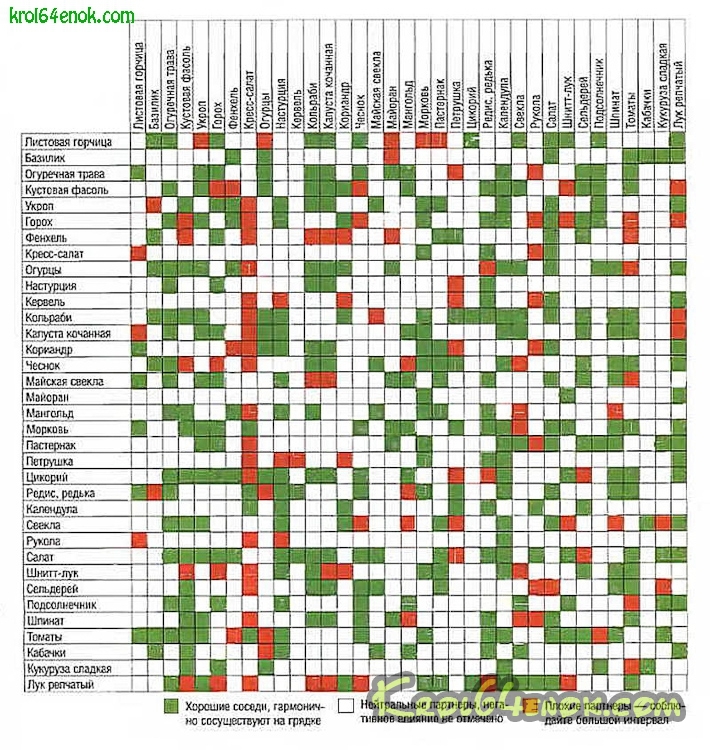
Crops with high and low nutrient requirements cannot be grown in the same bed. Maximum amount nutrients are absorbed from the soil by tomatoes, cucumbers, pumpkin, melon, watermelon, cabbage (except kohlrabi), rhubarb, celery, and leeks. The appetite for beets, onions, carrots, garlic, radishes, kohlrabi, and spices is slightly more moderate. But legumes accumulate nitrogen in their roots and break down phosphates, benefiting the soil. Plants with high to medium or medium to low needs usually grow well in close proximity. By planting plants with deep roots next to those with shallow roots, we allow them to avoid competition for water and nutrients. Crops that prefer drier soil should not be sown with crops that require frequent watering.
It happens that the neighborhood turns out to be useful only for one side. Therefore, you should take into account the interests of all the crops that you are going to place in close proximity.
Watermelon- a good companion to potatoes, oat root. Corn and peas improve the growth and taste of watermelons. Sow thistle and pigweed promote the growth of watermelons.
Artichoke feels good next to cucumbers, lettuce, celery and does not like being next to potatoes.
Basil common protects all plants from dipterans, and cucumbers from powdery mildew. Grows well next to tomatoes, onions, scorzonera, zucchini, fennel.
Helps eggplants grow healthy agaric. Beans repel the Colorado potato beetle. The space between the eggplants can be successfully used for salad. It is beneficial to surround the eggplant with basil. Tarragon and thyme can help fight flea beetles.
WITH okra It is good to place peppers, eggplants, melons, cucumbers.
Good neighbors for peas- cucumbers, cabbage, lettuce, kohlrabi, fennel, beets, rhubarb, carrots, radishes, radishes, corn, spinach, celery. The bad ones are potatoes, tomatoes, onions, leeks, string beans and kidney beans.

Potatoes inhibit growth melon and can cause them to wilt. The close proximity of cucumbers is harmful to melons - they can cross-pollinate, and both will become bitter. Radishes and pigweed help melons grow.

Strawberries grows well next to spinach, onions, carrots, leeks, radishes, radishes, kohlrabi, and beans. She benefits from onions and garlic, which protect her from gray rot. In the vicinity of bulbous vegetables, its taste improves. Its proximity to parsley, chives, garlic, coriander, cumin, and borage has a good effect on it. Does not like being near cucumbers and cabbage.
Good neighbors for zucchini and pumpkin- lettuce, peas, onions, string beans, spinach. Undesirable - potatoes, tomatoes, radishes.
For cabbage suitable neighbors are beans, carrots, beets, spinach, cucumbers, peas, endive lettuce, lettuce, rhubarb, string beans, beans, celery, tomatoes.
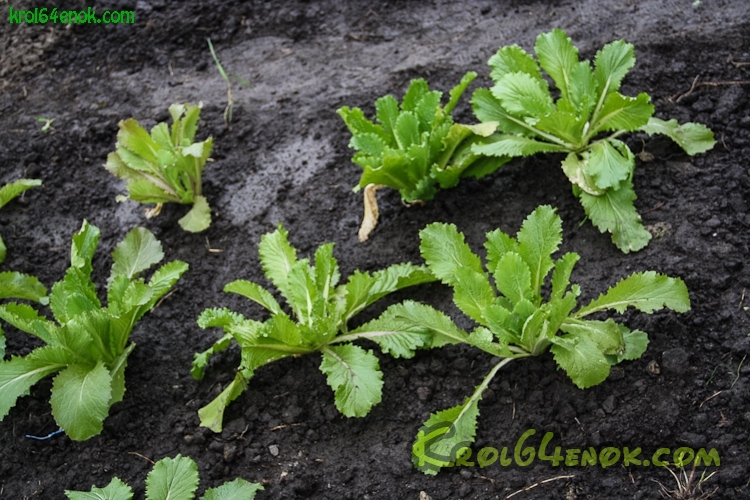
Next to cabbage, it is advisable to sow lemon balm, lemon catnip, chamomile, and borage. Cabbage protects celery from septoria. The only things she doesn't like are onions and potatoes. There are two exceptions to this rule: red cabbage does not tolerate the proximity of tomatoes, white cabbage does not tolerate beets.

Potatoes Kohlrabi, beans, string beans, and spinach are suitable. The taste of potatoes is improved by seeded coriander, caraway seeds, and peppermint. Does not like proximity to cucumbers, peas, cabbage, tomatoes, onions, beets, celery, sweet peppers, eggplants, and physalis. Potatoes are generally not very suitable for compact growing.
Kohlrabi suitable potatoes, tomatoes, cucumbers, peas, beans, broad beans, string beans, spinach, lettuce, radishes, radishes, Bell pepper, leeks, beets, celery, scorzonera, onions, asparagus. Next to kohlrabi, it is advisable to sow lemon balm, lemon catnip, chamomile, and borage. Doesn't like to be next to Chinese cabbage.
Watercress repels slugs, improves the taste of radishes growing next to it. It is recommended to plant it next to radishes, turnips, and head lettuce.
Coriander grows well next to cucumbers, cabbage, kohlrabi, beets, and potatoes.
Good neighbors for corn: zucchini, pumpkin, watermelon, melons, beans, string beans, lettuce, spinach, cucumbers, peas, beans. The bad ones are beets and celery.
![]()
Onion and garlic protect strawberries from gray rot of fruits, lettuce and carrots from aphids, carrots from carrot flies. They grow well next to cucumbers, lettuce, kohlrabi, tomatoes, zucchini, parsnips, scorzonera, and beans. Bad - with potatoes, peas, cabbage, beets, radishes, radishes, spinach, asparagus. Onions and garlic also do not like to grow next to carrots, but carrots grow large and healthy next to them. Next to the onions it is worth planting marjoram and chamomile. Leeks protect strawberries from gray rot, cabbage from bollworms, and carrots from carrot flies. Pairs well with tomatoes, cucumbers, lettuce, radishes, radishes, celery, scorzonera, endive salad, spinach, onions, carrots. Bad neighbors for it are beans, climbing beans, beans and other legumes, and beets. Chives are good for tomatoes and carrots. But it does not get along well with all types of beans, peas, beets, kohlrabi, and cabbage.
Chard prefers the proximity of cabbage, beans, climbing beans, lettuce, kohlrabi, carrots, turnips, radishes, and radishes. Doesn't like to be near beets and spinach.
Carrot protects onions from onion flies and onion moths, and radishes from flea beetles. Grows well next to cabbage, lettuce, kohlrabi, chard, radish, radish, onions and leeks, spinach, tomatoes, scorzonera, peas. Rosemary, chives, and marjoram go well with carrots. There are no unwanted neighbors for her.
oat root repels onion flies, so its seeds can be mixed with carrot seeds (also repel onion flies) and sown in rows interspersed with onion ones.
cucumbers grow well next to cabbage, peas, beans, corn, onions, celery, garlic, spinach, fennel. It is also recommended to plant mustard, coriander and marigolds nearby (they usually bloom at the same time as cucumbers and attract pollinating insects). They do not like to be near potatoes, tomatoes, eggplants, radishes, and radishes. The proximity of cucumbers to lettuce or beans can lead to cucumber disease.
U parsnip absolute contraindications No. Grows well in the vicinity of potatoes, lettuce, radishes, radishes, beets, spinach, onions, and turnips.
Sweet pepper does not like being next to beans. Grows best near tomatoes, cucumbers, kohlrabi.
Parsley improves the taste of tomatoes. Grows well next to cucumbers, onions, leeks, radishes, radishes, and tomatoes. Does not like the proximity of lettuce, pumpkin, watermelon, melon, zucchini, and squash.
Rhubarb He is friends with everyone and everyone feels good in his neighborhood. The optimal location is next to cabbage, lettuce, kohlrabi, spinach, and beans.
Radish and radish they love the proximity of tomatoes, beans and climbing beans, peas, lettuce, kohlrabi, carrots, chard, and spinach. They grow poorly next to onions, cucumbers, and Chinese cabbage.
Turnip gets along with all cultures. Its proximity to tomatoes, beans, peas, beans, lettuce, chard, parsnips, celery, and spinach has a positive effect on it.
cabbage salad protects kohlrabi and radishes from flea beetles, carrots from carrot flies. Gets along well with tomatoes, cucumbers, beans, broad beans, peas, string beans, cabbage, kohlrabi, radishes, onions and leeks, rhubarb, and turnips. Does not like the proximity of fennel, radish, celery. Chicory lettuce grows well next to fennel, lettuce, beets, carrots, tomatoes, climbing beans, and onions.
Beet grows well next to cabbage, lettuce, peas, beans, beans, onions, radishes, radishes. Does not like tomatoes, corn, string beans, spinach, leeks, potatoes. Proximity to onions is beneficial for beets, but not for onions. Beets do not like being next to carrots, but protect them from bacterial rot.
Celery protects cabbage from white cabbage caterpillars and cabbage flea beetle. They live in perfect harmony with cabbage and celery. Grows well next to cucumbers, beans, climbing beans, peas, beans, leeks, spinach, kohlrabi. Does not like the proximity of potatoes and corn.
Scorzonera(goat) protects against carrot flies. Grows well next to lettuce, kohlrabi, onions, garlic and leeks.
Like all legumes, soybeans loosens and enriches the soil. Suppresses weeds. Grows well with many plants, particularly wheat. Corn gets great benefit from a soybean company. Soybeans repel corn bugs. Volatile substances released by soybean leaves stimulate the absorption of phosphorus by corn. And with the help of nodule bacteria, soybeans feed the corn with nitrogen.
Asparagus protects tomatoes from wilting caused by fungal diseases. Green asparagus grows well next to tomatoes, cucumbers, beans, peas, radishes, lettuce, and kohlrabi. Doesn't like the proximity of onions and potatoes.
Thyme(savory) protects plants from beet aphids, improves taste qualities lettuce and fennel. Savory is good to grow next to zucchini, zucchini, pumpkin, watermelon, melon, tomatoes, beets, celery, cabbage, kohlrabi, and cucumbers. Thyme repels white grass caterpillars and slugs. It is advisable to place it next to cabbage.
Caraway has a beneficial effect on cucumbers, all types of beans, peas, cabbage, lettuce, kohlrabi, beets, spinach.
Tomatoes protect all types of cabbage, radishes and radishes from white cabbage caterpillars, cabbage flies and cabbage flea beetles, asparagus - from aphids and rust.

Tomatoes go well with onions, garlic, beans, lettuce, cabbage (except red cabbage), spinach, sweet peppers, radishes, radishes, chicory, spinach, parsley, beans, fennel. The condition of the plant and the taste of tomato fruits improve next to lemon balm, marigolds, mint, borage and stinging nettle. Tomatoes do not like being next to kohlrabi, fennel, dill, peas, and turnips. Tall plants, potatoes and carrots contribute to the infection of tomatoes with late blight.
Pumpkin grows well with corn. Radishes planted around the hole help the pumpkin fight pests. Nasturtium is also good in this role. Pigweed, quinoa, and sow thistle promote better growth.
Dill accelerates the germination of neighboring crops (for example, carrots), repels aphids and white butterfly caterpillars. Almost all plants feel good next to dill. Especially beans and climbing beans, peas, green asparagus, potatoes, tomatoes, cabbage, kohlrabi, carrots, turnips, lettuce, beets, celery, spinach, onions.
Beans, like beans, protects cabbages, such as Brussels sprouts, from cabbage aphids. Likes to grow next to cucumbers, potatoes, cabbage, turnips, radishes, radishes, lettuce, kohlrabi, chard, tomatoes, spinach, rhubarb, and beets. Doesn't like to be near peas, carrots, onions, leeks, or fennel. Climbing beans grow well next to potatoes, cucumbers, tomatoes, zucchini, pumpkin, watermelons and cantaloupes, corn, endive, lettuce, kohlrabi, celery, and spinach. Does not get along well with onions, fennel, leeks, and peas.
Fennel grows well next to cabbage, lettuce, kohlrabi, spinach, endive lettuce, cucumbers, and peas. Does not like proximity to tomatoes and all types of beans.
Garlic It is advisable to plant wherever possible. The volatile substances it contains repel pests. Garlic protects the garden from mice, various harmful insects, nematodes, fungi and bacteria. It is especially recommended to grow garlic next to strawberries, tomatoes, cucumbers, potatoes, eggplants, sweet peppers, physalis, carrots, beets, lettuce, and spinach. Garlic does not go well with kohlrabi and beans.
Sage repels carrot flies, slugs, white butterfly caterpillars. Grows well next to beans, peas, kohlrabi, cabbage, fennel, and carrots. Doesn't get along well with cucumbers.
Spinach protects radishes and radishes from flea beetles. It gets along well with almost all garden crops. Loves proximity to potatoes, cucumbers, tomatoes, beans, beans, cabbage, turnips, kohlrabi, radishes, radishes, parsnips, leeks, rhubarb, carrots, celery. Doesn't like onions and beets. New Zealand spinach grows well only next to lettuce, kohlrabi, tomatoes, radishes and radishes.
Endive(salad chicory) grows well in the vicinity of cabbage, tomatoes, carrots, beans of all kinds, kohlrabi, fennel, onions and leeks, radishes and radishes.
__________________________________________________________________________
It is highly desirable to plant in compacted beds aromatic herbs. They protect plants from pests and diseases, improve the aroma and taste of some vegetables growing in the neighborhood, and release phytocidal and insecticidal substances. The flowers of aromatic plants such as basil, savory, cosmos, daisies, caraway, zinnia, and lavender attract pollinators.
Chamomile gets along well with all cultures.

Marigolds (calendula) are a very useful neighbor for the most different types vegetables and for strawberries.

Tarragon cannot be grown next to fennel, rosemary - with cucumbers, purslane - with onions, watercress - with tomatoes.
Leaf chervil repels ants, slugs, aphids, and protects lettuce from powdery mildew. Grows well next to endive lettuce, head lettuce, radishes, radishes, and beans.
Mint is placed next to cabbage, lettuce, kohlrabi, tomatoes, and carrots. All types of mint repel cabbage pests: whiteweed, flea beetles, and ants.
Not a single vegetable crop can tolerate the proximity of fennel, hyssop, and wormwood. Typically, fennel has a very negative effect on other plants, but cucumbers are an exception.
Vegetable harvest and fruit trees it will be higher if you sow parsley, dill, coriander, caraway seeds, anise, and basil between them.
The taste of tomatoes and peppers, onions, cabbage, and lettuce improves significantly if basil and dill grow next to them.
Plants that repel pests
To protect against harmful insects, calendula (marigold), tagetes, nasturtium, chicory and Persian chamomile can be planted around the perimeter of the beds.
Low marigolds (tagetes) protect tomatoes and other vegetables from whiteflies and repel insects. At the same time, these flowers disinfect the soil.
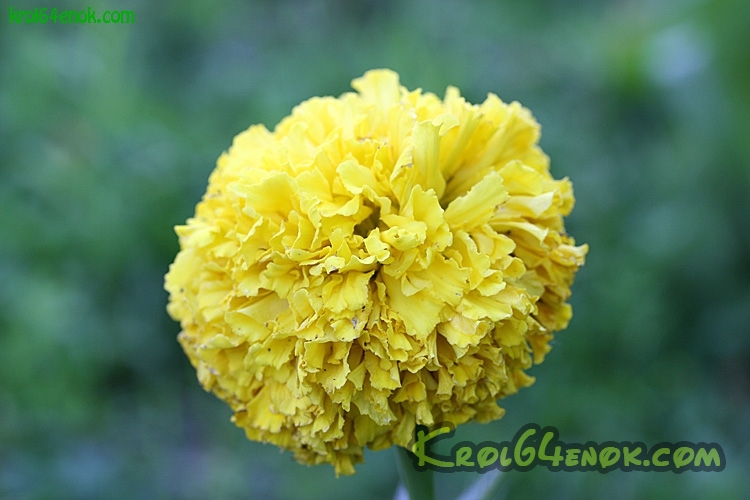
Nasturtium repels aphids, bedbugs and other flea beetles from garden trees and shrubs.
Dill and basil will protect against caterpillars and cabbage worms.
Basil repels flies and mosquitoes.
Garlic, marigolds, and onions repel moles.
Euphorbia spurge repels moths and mice.
The imperial hazel grouse repels small rodents.
Rabbits are repelled by catnip, coriander, nasturtium, onions, tansy, horseradish, and beans.
Coriander will repel all mouse-like rodents from other vegetables located nearby.
Lettuce, leeks, onions, rosemary, sage, tobacco, and wormwood also protect against mice.
Hyssop, onions and mint protect against cabbage cutworms and other butterflies.
Castor beans and daffodils protect against ants.
From the codling moth, marigolds and calendula.
From the glass glass there are peach geraniums and marigolds.
From a glass of pumpkin garlic.
From cicadas geranium and petunia.
From aphids radishes.
For whiteflies, nasturtium, peppermint, thyme, wormwood.
From cabbage whites, celery, tomatoes, peppermint, sage, wormwood and medicinal.
From the Colorado potato beetle, hyssop, peppermint, nasturtium, sage, tansy, thyme, medicinal wormwood.
From cabbage fly: peppermint and spearmint, wormwood, lavender, small valerian.
From carrot flies, garlic, marigolds, radishes, sage, wormwood.
From scoop fennel, garlic, rosemary, parsley, oak bark.
Slugs are repelled by garlic, wormwood, sage, mustard, and hyssop. Hyssop is also afraid of the white moth caterpillar.
